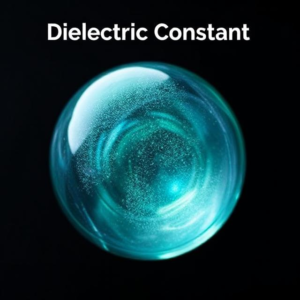Electric Dipoles and Electric Fields: Explain

1. What is an Electric Dipole?
An electric dipole consists of two opposite charges of equal magnitude that are separated by a certain distance. Think of it like a pair of positive (+) and negative (-) charges that are stuck together but not touching.
- Example: Imagine a +1 charge on one side and a -1 charge on the other side, and the distance between them is d. This pair forms a dipole.
Important points about electric dipoles:
- Equal but opposite charges: The two charges are equal in size but opposite in sign (one positive, one negative).
- Separation distance: The charges are separated by a fixed distance d. The separation between the charges is an important factor when considering the dipole’s behavior.
2. Electric Dipole Moment
The electric dipole moment (
) is a measure of the strength of the dipole and is given by the product of the charge and the distance between the charges.
Where:
= magnitude of each charge (same for both the positive and negative charges)
= displacement vector that points from the negative charge to the positive charge (direction matters!)
What does this mean?
The dipole moment is a vector quantity that points from the negative charge to the positive charge. The larger the charge and the greater the distance between the charges, the stronger the dipole.
3. Electric Field of a Dipole
When you place an electric dipole in an electric field, the dipole will experience a force. However, the situation is more complicated than just a simple point charge, because the positive and negative charges of the dipole experience forces in opposite directions. The electric field of a dipole depends on the position in space and the orientation of the dipole.
Field due to a Dipole at a Point in Space:
The electric field (
) due to a dipole at a point in space depends on both the distance from the dipole and the angle relative to the dipole’s axis (the line connecting the positive and negative charges).
For a dipole located at the origin with charges separated by distance
, the electric field at a point is given by:
Where:
is the distance from the dipole to the point where the field is being calculated.
is the angle between the dipole axis and the line from the dipole to the point.
and
are unit vectors in the radial and angular directions.
Key ideas:
- The electric field is stronger closer to the dipole.
- The direction and shape of the electric field depend on where you are in relation to the dipole.
4. Behavior of a Dipole in an External Electric Field
When you place a dipole in a uniform electric field, it will experience both a force and a torque:
- Force: The net force on a dipole in a uniform electric field is zero because the attractive force on the negative charge is exactly balanced by the repulsive force on the positive charge.
- Torque: The torque causes the dipole to rotate. The dipole will tend to align itself with the electric field, minimizing the potential energy.
Torque on a Dipole:
The torque (
) experienced by a dipole in an external electric field is given by:
Where:
is the dipole moment.
is the external electric field.
The torque tries to rotate the dipole so that the dipole moment aligns with the external field. This is similar to how a compass needle aligns with the Earth’s magnetic field.
5. Potential Energy of an Electric Dipole
The potential energy (
) of a dipole in an electric field depends on the orientation of the dipole relative to the field. When the dipole is aligned with the electric field, its potential energy is minimized. When it is opposite to the field, its potential energy is maximized.
The formula for potential energy is:
Where:
= potential energy
= dipole moment
= electric field
- When the dipole is aligned with the field (i.e., the angle between
and
is 0), the potential energy is lowest.
- When the dipole is opposite the field (i.e., the angle is 180°), the potential energy is highest.
6. Electric Field Lines of a Dipole
If you were to look at the electric field around a dipole, the field lines would show the directions in which the electric force would push a positive charge. These lines start from the positive charge and curve around toward the negative charge.
- The field lines are denser near the charges and spread out farther as you move away from the dipole.
- The field has a two-lobed pattern, with field lines pointing from the positive charge to the negative charge, but also showing how the field wraps around them.
Summary of Key Points
- Electric Dipole: A system of two opposite charges of equal magnitude separated by a fixed distance.
- Dipole Moment: A measure of the strength and orientation of the dipole, given by
.
- Electric Field of a Dipole: The field depends on both the distance from the dipole and the angle relative to the dipole’s axis.
- Dipole in an External Electric Field: It experiences torque, which tries to align the dipole with the external electric field.
- Potential Energy: The dipole has the lowest potential energy when aligned with the electric field and the highest when opposite to the field.
Real-World Example: Water Molecule
A water molecule (H₂O) is a good example of a natural electric dipole. The oxygen atom is more electronegative (pulls electrons more strongly), and the hydrogen atoms have a slight positive charge, creating a dipole moment. This dipole behavior plays a huge role in water’s unique properties like its high boiling point and its ability to dissolve many substances.











